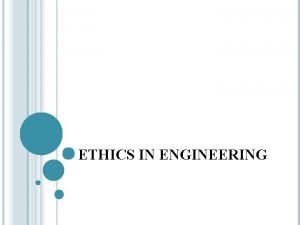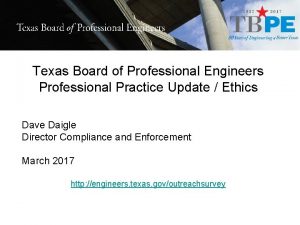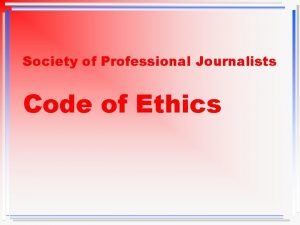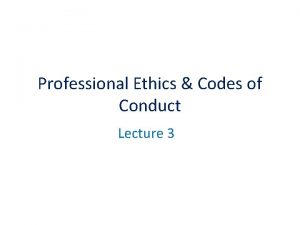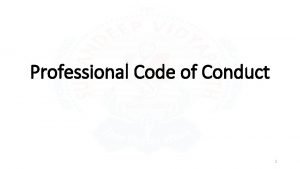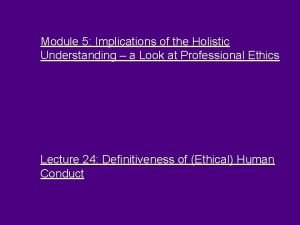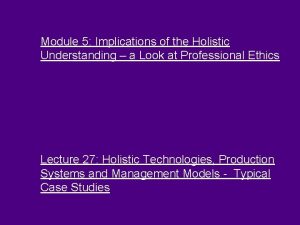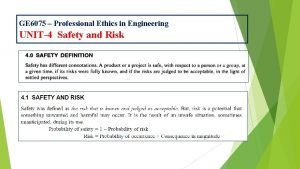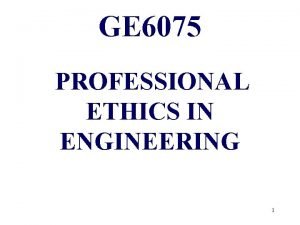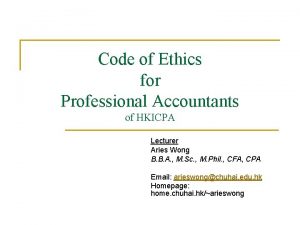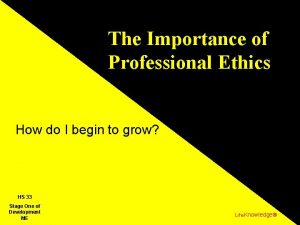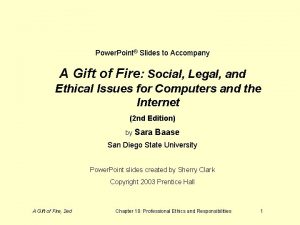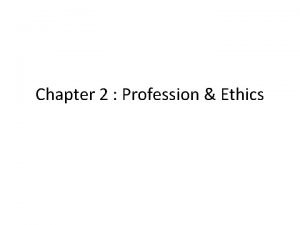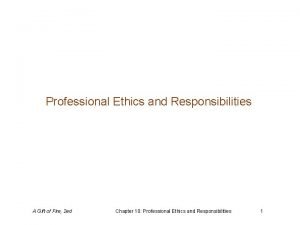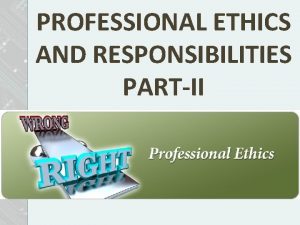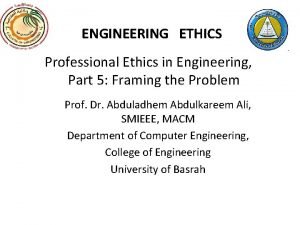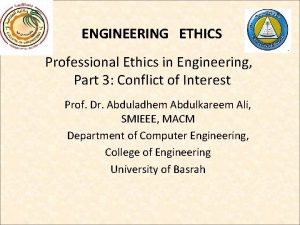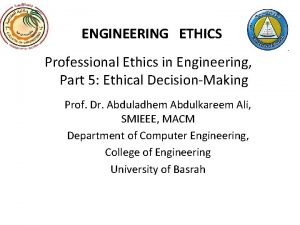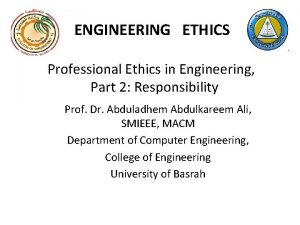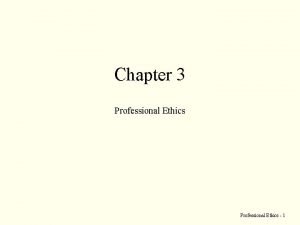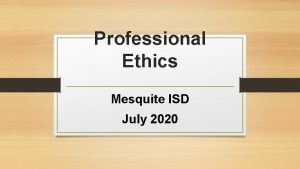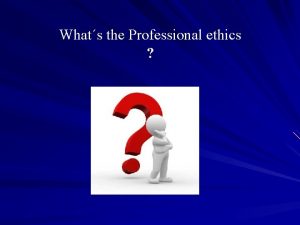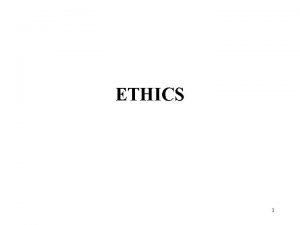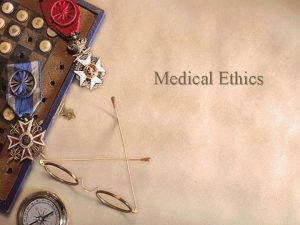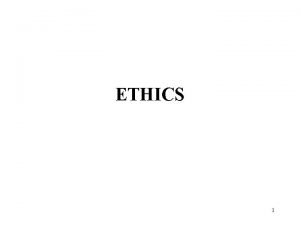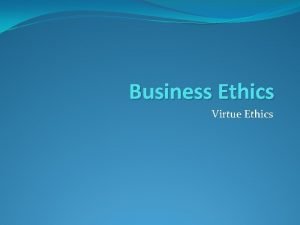ENGINEERING ETHICS Professional Ethics in Engineering L 6



















- Slides: 19

ENGINEERING ETHICS Professional Ethics in Engineering, L 6: The Citicorp Center Case and Pentum Flaw Prof. Dr. Abduladhem Abdulkareem Ali, SMIEEE, MACM Department of Computer Engineering, College of Engineering University of Basrah

William Le. Messurier designed the structure for the Citicorp Center The distinguished structural engineer William Le. Messurier designed the structure for the Citicorp Center in New York City in the mid-1970 s. 2

The Citicorp Center in Manhattan … 3 The 59 -story building is one of the tallest in Manhattan. Notice that the building is supported by nine-story high columns on the four sides of the building, rather than at the corners.

… was built over a church on the corner of a city block Each column was placed in the middle of each side of the building rather than at the four corners, so that one corner of the tower was cantilevered over the church that occupies one corner of the city block. 4

The diagonal bracing structure was innovative Le. Messurier designed a unique system of wind braces with 48 chevron-shaped steel members welded together to form the superstructure. 5

Quartering winds can cause a building to sway In June 1978, a question from an engineering student led Le. Messurier to examine his design again. His new calculations showed that under some wind conditions, the forces that the braces had to withstand were 40% larger than his original calculations had shown: 6

• Even with the extra stresses, the building would have been strong enough to withstand the expected loads, but just weeks before, Le. Messurier had learned that during construction, the welded joints in the superstructure had been replaced with bolted joints. 7

• This replacement had been approved by other engineers from his firm. Further calculations showed that the bolted joints would be dangerously weak when the building was subjected to strong winds. Meteorological records for New York indicated that a storm with sufficiently strong winds to tear the joints apart could be expected on average once every 16 years

Le. Messurier took responsibility for reinforcing the structure • Calculated that building would fall down in a 16 -year storm • Determined that welding steel plates over 200 joints would secure the building • Worked with Citicorp to organize repairs over two months • Litigation settled for limit on Le. Messurier’s professional liability insurance 9

The Citicorp Center may now have the strongest structure in New York 10

THE FLAW IN THE INTEL PENTIUM CHIP • In late 1994, the media began to report that there was a flaw in the new Pentium microprocessor produced by Intel • Apparently, flaws in a complicated integrated • circuit such as the Pentium are not uncommon. Most of these flaws cannot be detected by the user and do not affect the operation of the computer. The flaw that was discovered in 1994 was different.

majority of users would never even notice it. • The flaw that was discovered in 1994 was different. It caused incorrect answers when per-forming doubleprecision arithmetic, a very common computer operation. The flaw was easily detected by computer users. In fact, it first came to light when a university researcher noticed

Intel Response • Although there was indeed a defect in the chip, the defect was insignificant and the vast majority of users would never even notice it. • The chip would be replaced for free only for users who could demonstrate that they needed an unflawed version

Pentium owners Clam and Response • No one can predict whether the flaw might be significant in a future application. • IBM, a major Pentium user, canceled the sales of all IBM computers containing the flawed chip

• after much negative publicity in the popular personal computer literature and the daily press, and an outcry from Pentium users, Intel agreed to replace the flawed microprocessor with an unflawed version for any customer who asked to have it replaced.

Ethical Issues • Public relation or ethical issue? • Should defects be revealed to consumers? Are there times when it is ethical not to reveal defects? Is it an ethics problem only if safety is involved?

• Suppose a manufacturer places a warning in the literature that comes with a product such as “This product may contain unexpected flaws and might not operate correctly under all conditions. ” Does this solve the ethical problems for the company?

• How can an engineer be sure that there are no defects in a product? If it is impossible to eliminate all defects in a product, what level of defects is acceptable? Does this depend on what the product is?

• What do codes of ethics of professional engineering organizations such as the IEEE say about selling products that are known to be defective? • What were the responsibilities of the engineers working on the Pentium chip once they became aware of the flaw?
 Engineering ethics lecture notes
Engineering ethics lecture notes Professional ethics in engineering
Professional ethics in engineering Texas board of professional engineers roster
Texas board of professional engineers roster Code of ethics society of professional journalists
Code of ethics society of professional journalists 8 general moral imperatives
8 general moral imperatives Code of conduct professional ethics
Code of conduct professional ethics Definitiveness of ethical human conduct
Definitiveness of ethical human conduct Holistic technology in professional ethics
Holistic technology in professional ethics Ratesetter legal finance
Ratesetter legal finance Professional issues in cyber security
Professional issues in cyber security Risk-benefit analysis in professional ethics
Risk-benefit analysis in professional ethics Objectives of professional ethics
Objectives of professional ethics Article 7 school officials teachers and other personnel
Article 7 school officials teachers and other personnel Code of ethics for professional accountants
Code of ethics for professional accountants Professional ethics presentation
Professional ethics presentation Challenger ethics case study
Challenger ethics case study Importance of professional ethics
Importance of professional ethics Cips code of ethics and professional conduct
Cips code of ethics and professional conduct Asme code of ethics
Asme code of ethics The gift of fire
The gift of fire

